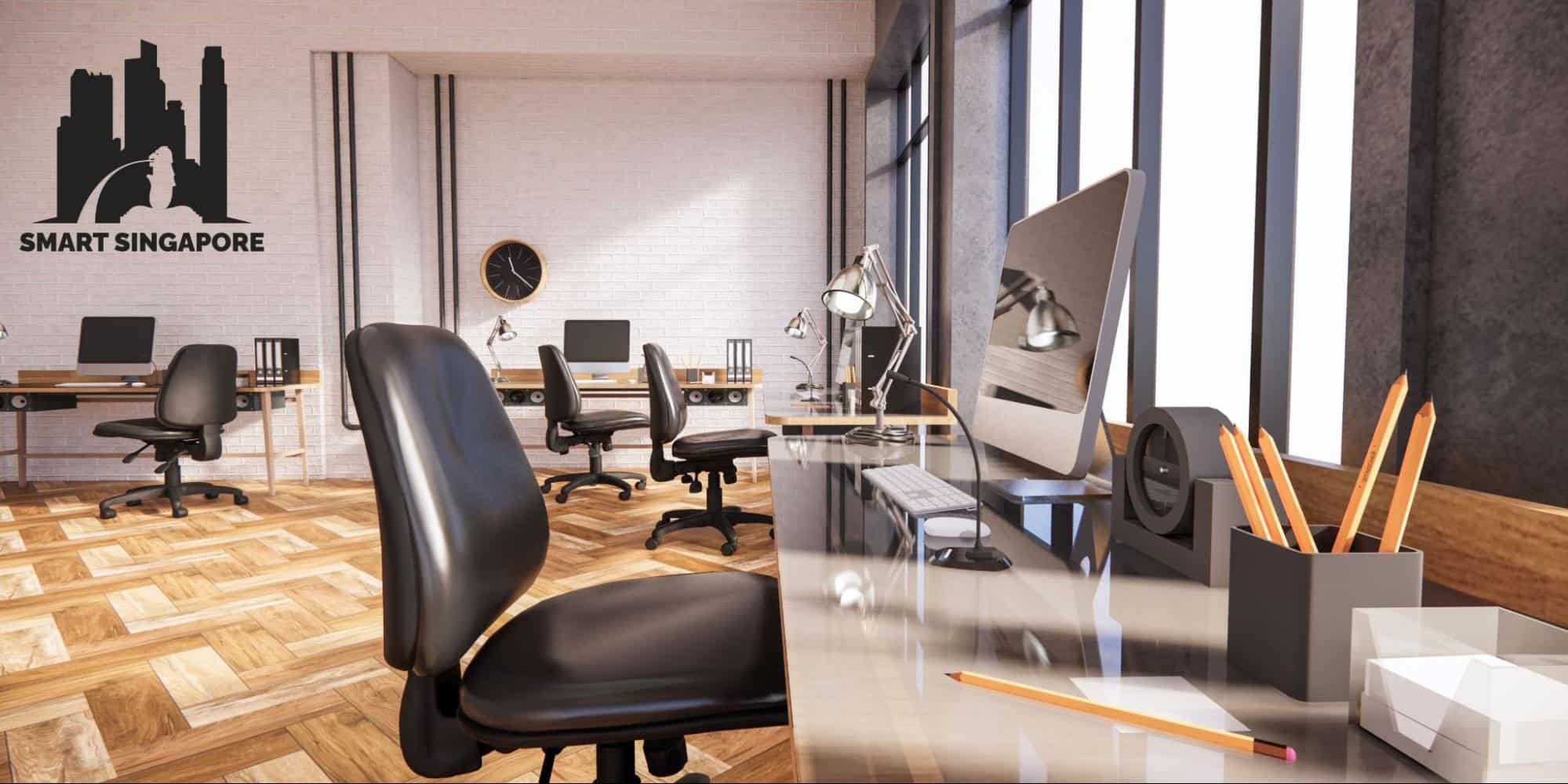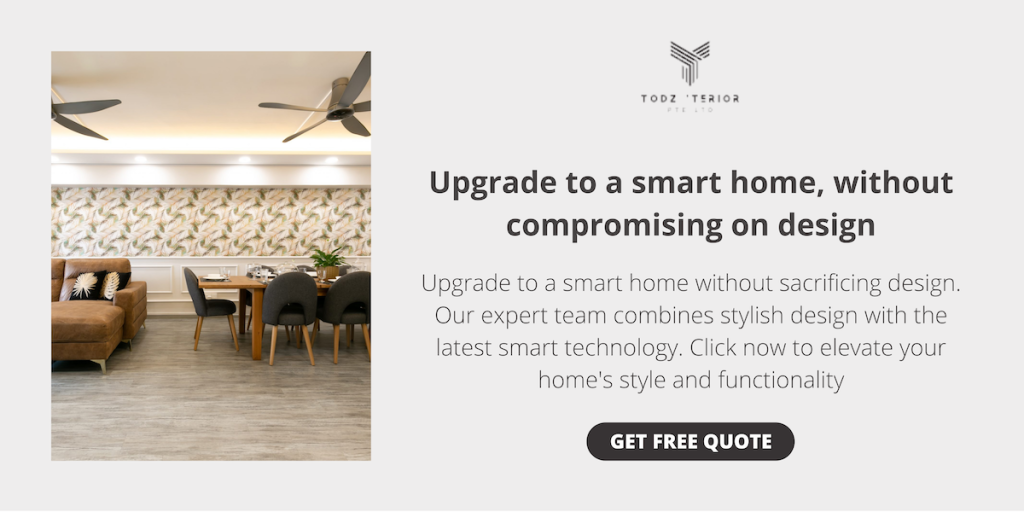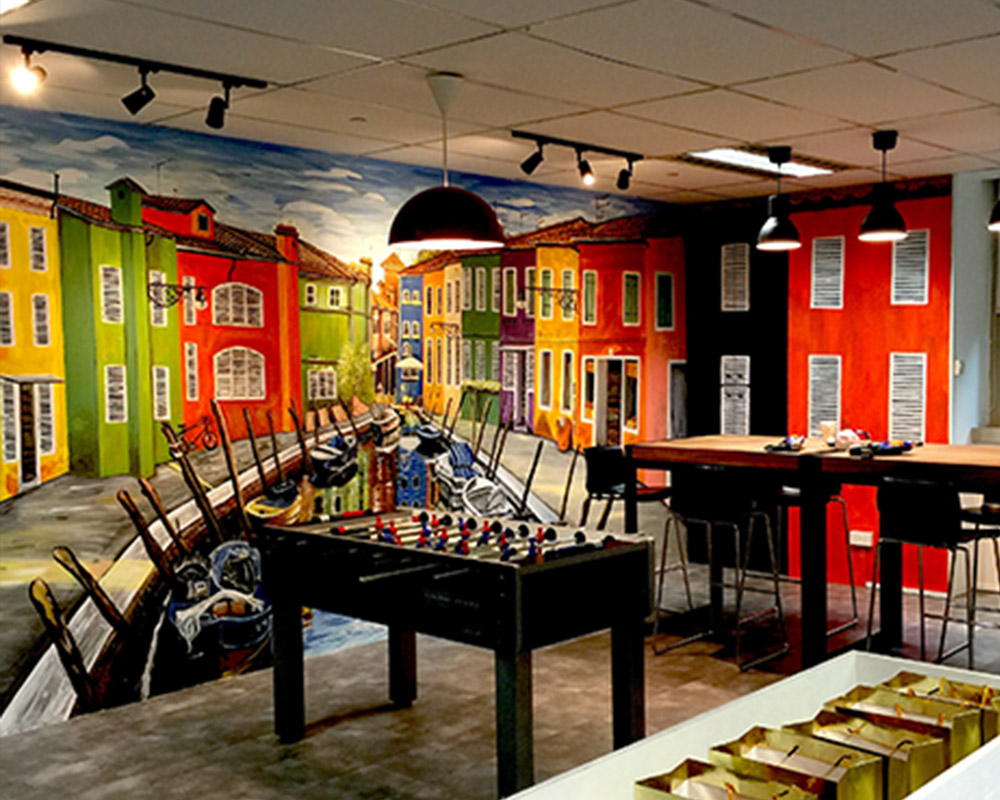In today’s fast-paced world, businesses need to create a functional and effective commercial space that aligns with their brand image and meets the needs of their customers and employees. Designing a commercial space that is both aesthetically pleasing and functional can be a daunting task, but it doesn’t have to be. With the right tips and tricks, any business owner can create a space that maximizes productivity and fosters creativity. Whether you’re designing a new commercial space or revamping an existing one, this article will provide you with valuable insights and practical advice to help you create a functional and effective workspace that sets you apart from the competition.
In This Article
Toggle
Understanding the Purpose of the Space
Understanding the purpose of a commercial space is crucial for creating a design that is both functional and effective. Here are some key reasons why understanding the purpose of the space is important, along with tips for identifying the needs of the business and its employees:
- Ensures functionality: By understanding the purpose of the commercial space, designers can create a layout and design that maximizes functionality and efficiency.
- Supports business goals: The design of a commercial space can influence the success of the business. By understanding the business’s goals and needs, designers can create a space that supports these objectives.
- Promotes productivity: The design of a commercial space can have a significant impact on employee productivity. By understanding the needs of the business and its employees, designers can create a space that promotes productivity and collaboration.
Tips for identifying the needs of the business and its employees:
- Conduct interviews: Interviews with business owners and employees can provide valuable insights into the needs and goals of the business. Designers can use this information to create a space that supports the business and its employees.
- Observe work processes: Observing the work processes of employees can provide insights into the flow of the space and identify areas for improvement.
- Consider the customer experience: Understanding the customer experience can help designers create a space that is welcoming and functional for customers.
- Analyze industry trends: Keeping up-to-date with industry trends and best practices can provide designers with insights into how to create a space that is functional and effective for the business.

Maximizing Space Efficiency
Maximizing space efficiency is an important consideration when designing a commercial space. Here are some strategies for maximizing space efficiency, along with tips for choosing furniture and decor that optimize space:
- Zoning: Zoning involves dividing a space into different areas based on their function. This can help maximize the efficiency of the space by ensuring that each area is used for its intended purpose. Zoning can also improve the flow of the space, making it more functional and efficient.
- Layout: The layout of a commercial space is another important consideration for maximizing space efficiency. A well-designed layout can maximize the use of space and improve functionality. For example, a layout that prioritizes natural light and views can create a more open and spacious feel.
- Furniture: Choosing the right furniture is critical for optimizing space in a commercial setting. Furniture that is multi-functional, such as storage ottomans or tables with built-in storage, can help save space while still providing necessary functionality. Additionally, selecting furniture that is appropriately sized for the space can help prevent overcrowding and improve flow.
- Decor: Decor can also play a role in maximizing space efficiency. Choosing decor that is simple and minimalist can create a more open and spacious feel. Additionally, incorporating mirrors and reflective surfaces can help create the illusion of more space.
Tips for choosing furniture and decor that optimize space:
- Consider multi-functional pieces: When choosing furniture, look for pieces that can serve multiple functions to save space.
- Choose appropriately-sized furniture: Furniture that is too large or too small for the space can be both visually unappealing and inefficient.
- Keep it simple: Simple and minimalist decor can create a more spacious feel in a commercial space.
- Incorporate mirrors and reflective surfaces: Mirrors and other reflective surfaces can create the illusion of more space and light.
 Creating a Welcoming Atmosphere
Creating a Welcoming Atmosphere
Creating a welcoming atmosphere is an important consideration when designing a commercial space. Here are some tips for creating a positive atmosphere through color, lighting, and decor choices:
- Color: The colors used in a commercial space can have a significant impact on the atmosphere. Warm colors like yellow, orange, and red can create a welcoming and inviting feel, while cool colors like blue and green can create a more calming atmosphere. Neutral colors like white, beige, and gray can create a clean and professional look.
- Lighting: Lighting is another key factor in creating a welcoming atmosphere. Natural light is ideal, but if it’s not possible, consider using a mix of ambient, task, and accent lighting to create a warm and inviting atmosphere. Avoid harsh or overly bright lighting, as it can create an unwelcoming and uncomfortable atmosphere.
- Decor: Decor can also play a significant role in creating a welcoming atmosphere. Consider incorporating comfortable seating, soft textures, and natural elements like plants to create a more inviting feel. Artwork and other decorative elements can add personality and interest to the space, making it more visually appealing and welcoming.
Tips for choosing colors, lighting, and decor that create a positive atmosphere:
- Consider the brand and target audience: The colors, lighting, and decor choices should align with the brand and appeal to the target audience.
- Use color strategically: Use warm colors in areas where you want to create a welcoming atmosphere, and cool colors in areas where you want to create a more calming atmosphere.
- Incorporate natural light: If possible, incorporate natural light into the design to create a warm and inviting atmosphere.
- Use a mix of lighting: A mix of ambient, task, and accent lighting can create a warm and welcoming atmosphere.
- Choose comfortable seating: Comfortable seating can create a more welcoming atmosphere and encourage customers to spend more time in the space.
- Add natural elements: Incorporating natural elements like plants can create a more inviting feel and help purify the air.
Incorporating Technology
Incorporating technology into a commercial space can offer many benefits, from improving efficiency to enhancing the customer experience. Here are some tips for choosing and implementing technology solutions:
- Identify the goals: Before incorporating technology into a commercial space, it’s important to identify the goals of the technology. Are you trying to improve efficiency, enhance the customer experience, or streamline operations? Identifying these goals will help you choose the right technology solutions.
- Consider the user experience: When choosing and implementing technology solutions, it’s important to consider the user experience. Will the technology be easy for employees and customers to use, or will it create more confusion and frustration?
- Choose the right equipment: Choose technology solutions that are reliable and appropriate for the needs of the business. This may include things like point-of-sale systems, digital displays, and smart thermostats.
- Plan for installation: Before implementing technology solutions, it’s important to plan for installation. This may include things like running new electrical or network wiring, and ensuring that the technology is compatible with existing infrastructure.
- Train employees: Once technology solutions are implemented, it’s important to train employees on how to use them. This will ensure that they are used properly and can help maximize the benefits of the technology.
Benefits of incorporating technology into a commercial space:
- Improved efficiency: Technology solutions can automate processes and streamline operations, leading to improved efficiency and productivity.
- Enhanced customer experience: Technology solutions like digital displays, touchscreens, and mobile apps can enhance the customer experience and make it easier for customers to interact with the business.
- Increased security: Technology solutions like security cameras and access control systems can improve security and help prevent theft and other security breaches.
- Greater control: Technology solutions like smart thermostats and lighting controls can give business owners greater control over the environment, leading to improved energy efficiency and cost savings.
Prioritizing Accessibility
Prioritizing accessibility in commercial space design is crucial to ensure that all customers, including those with disabilities or mobility issues, can access and enjoy the space. Here are some tips for designing for accessibility:
- Understand the requirements: In Singapore, there are regulations and guidelines in place to ensure that commercial spaces are accessible to all. It’s important to understand these requirements and ensure that the design is in compliance.
- Consider inclusive design: Inclusive design is a design approach that considers the needs of all users, regardless of their abilities or disabilities. By incorporating inclusive design principles into the commercial space design, it can be made accessible and welcoming to everyone.
- Provide accessible features: Accessibility features such as ramps, wide doorways, and accessible restrooms should be provided to ensure that customers with disabilities can access the space and use the facilities comfortably.
- Ensure proper signage: Clear and visible signage is important in commercial spaces to help customers navigate the space, especially for those with visual impairments. Braille and tactile signage can also be provided to ensure that customers with visual impairments can access information.
- Train employees: It’s important to train employees on how to assist customers with disabilities and ensure that they are comfortable and welcome in the space.
Prioritizing accessibility in commercial space design is not only important for compliance with regulations, but it also ensures that the space is welcoming and inclusive to all customers.
Balancing Design and Functionality
Balancing design and functionality is a critical aspect of commercial space design. While an aesthetically pleasing design can attract customers, it’s important to ensure that the space also functions well for employees and customers. Here are some tips for achieving a balance between design and functionality:
- Prioritize functionality: Start by identifying the primary needs and functions of the space. Consider how the space will be used and what elements are necessary for it to function well.
- Incorporate design elements strategically: Once the functional needs have been identified, design elements can be incorporated to enhance the aesthetics of the space. However, it’s important to ensure that the design elements do not compromise the functionality of the space.
- Consider the user experience: When designing a commercial space, it’s important to consider the experience of the customers and employees. The design should facilitate a positive and comfortable experience for all users.
- Optimize layout and traffic flow: The layout of the space can have a significant impact on its functionality. Careful consideration should be given to the traffic flow and how customers and employees move throughout the space.
- Choose materials and finishes wisely: The materials and finishes used in the space should not only be aesthetically pleasing but also functional and durable. Materials that are easy to clean and maintain can help ensure that the space remains functional over time.
What we have learnt
Designing a functional commercial space is no easy feat, but with the right tips and tricks, it can be a successful and enjoyable process. From considering the purpose of the space to maximizing natural light and incorporating biophilic and sustainable design principles, there are many factors to keep in mind when creating a functional and appealing space for your business.
By hiring a professional commercial interior designer with expertise and knowledge of regulations, codes, collaboration with other professionals, and access to resources and materials, you can ensure that your space is designed to meet your specific needs and goals. By implementing these tips and tricks, you can create a functional and inviting commercial space that will impress your clients and enhance your business’s success.

Renovate with Todzterior!
We’re here to help you get started with Smart Home solutions.
Todzterior is the only company whose mission is to make homes “Smart.” In other words, our Smart Home solutions are built to help make your life easier. The possibilities for the future of the smart home are endless. You’ve come to the right place. We’re here to help you get started with Smart Home solutions and ensure you with smart quality and reliability.
Don’t hesitate to find out more about us. Call us here or visit our showroom at 7 Gambas Crescent #01-03 Ark@Gambas Singapore 757087.
Frequently asked Question
1) What are some important factors to consider when designing a functional commercial space?
A: Some important factors to consider when designing a functional commercial space include the purpose of the space, the needs of its occupants, and the desired aesthetic. Additionally, elements such as lighting, furniture, and storage solutions should be carefully considered to ensure optimal functionality.
2) How can I optimize the layout of my commercial space for functionality?
A: A functional layout can be achieved by carefully planning the flow of the space and grouping similar functions together. This can be achieved through the use of zoning, color-coding, and the strategic placement of furniture and equipment.
3) How can I create a functional workspace without sacrificing aesthetics?
A: It is possible to create a functional workspace that is also visually appealing. Incorporating elements such as natural light, comfortable and ergonomic furniture, and attractive color schemes can help to create a functional and inviting space.
4) How can I ensure that my commercial space meets the needs of all of its occupants?
A: To ensure that your commercial space meets the needs of all of its occupants, it is important to consider factors such as accessibility, flexibility, and diversity. This can be achieved through the use of universal design principles, the inclusion of a variety of workspaces and meeting areas, and the consideration of the needs of all employees.
5) How can I incorporate technology into my commercial space to improve functionality?
A: Incorporating technology can greatly improve the functionality of a commercial space. This can include elements such as smart lighting and temperature control systems, collaborative digital tools, and ergonomic equipment. It is important to carefully consider the specific needs of your space and its occupants when selecting and implementing technology solutions.
